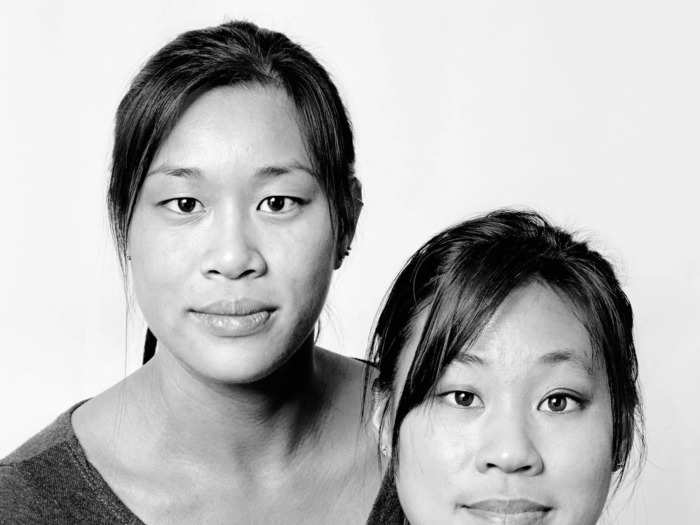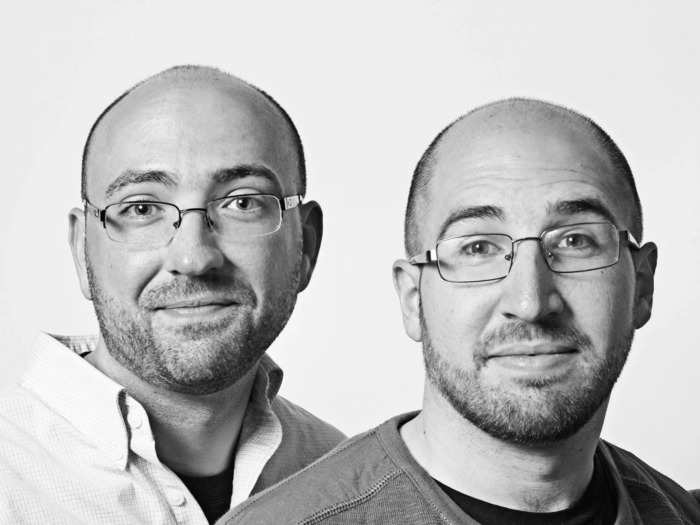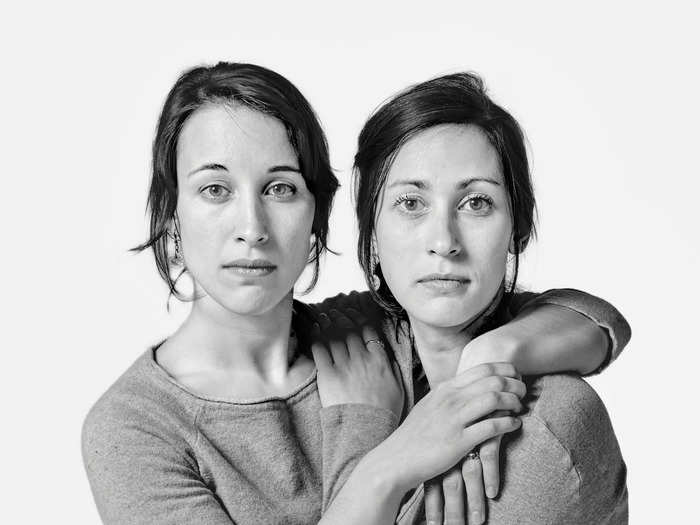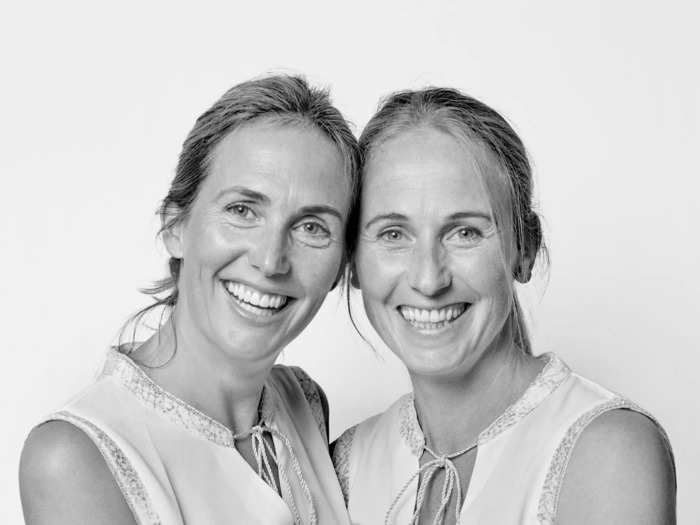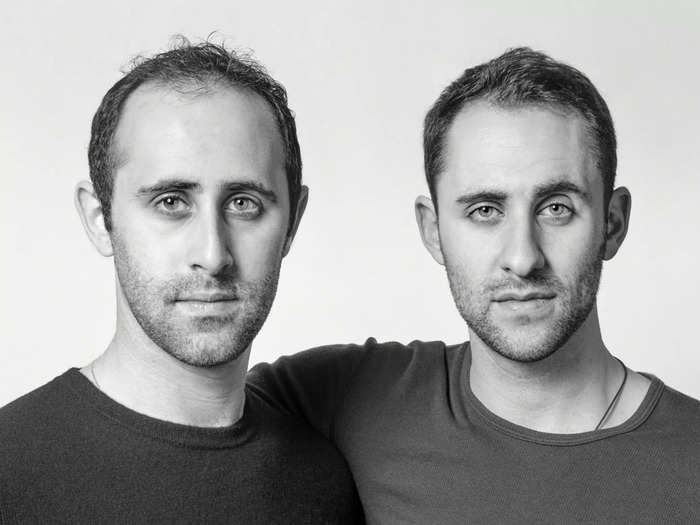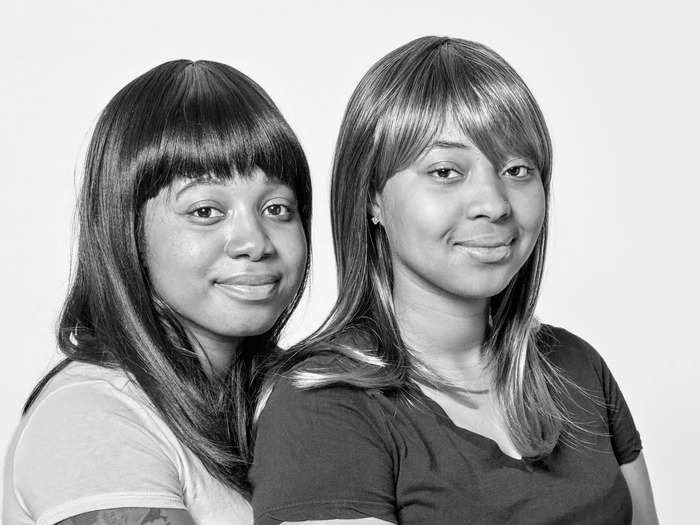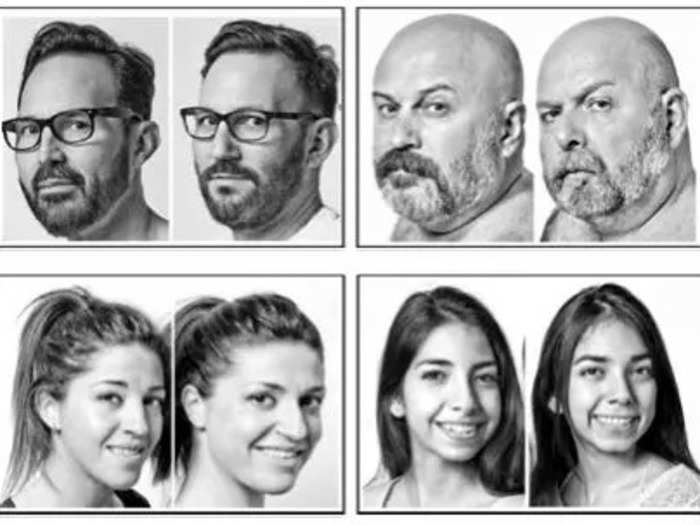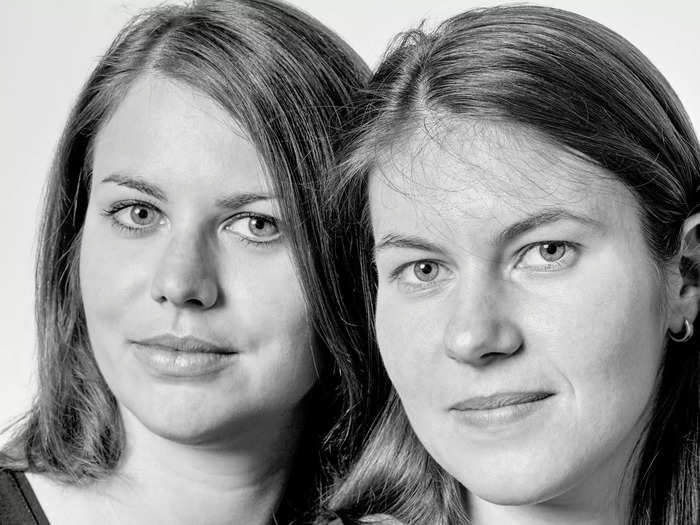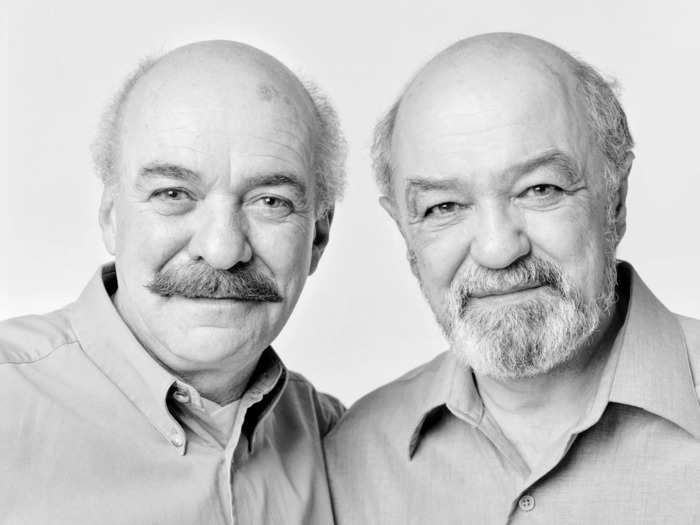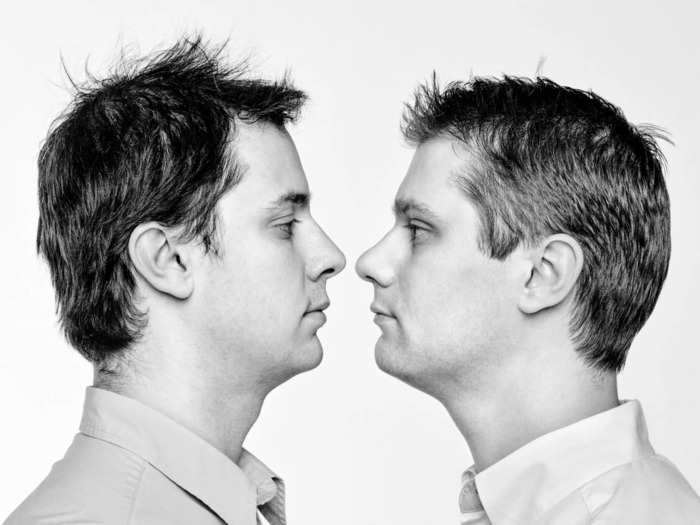Pedro Soto and Albert Kaotico, a couple who are so similar they share DNA. They got married earlier this year.François Brunelle
- People who look alike share similar DNA, a new study of 32 doppelgängers has found.
- The research sheds new light on which parts of our genetic code shape our face.
Pedro Soto sees the resemblance — but Albert Kaotico doesn't.
The Spanish couple, photographed above in 2015, are part of a decades-long project, that has brought together hundreds of doppelgängers in front of photographer François Brunelle's lens.
And as it turns out, the physical similarities between Soto and Kaotico are more than just skin deep.
Scientists recently discovered that some unrelated look-alikes — including Soto and Kaotico — share a surprising amount of DNA in common – and those similar snips of genetic material may govern their looks in some predictable ways.
The finding is the result of a unique new study, a collaboration between Spanish scientists who study genetics and the French-Canadian photographer who has been capturing these unrelated "look-alike" pairs around the world for more than two decades.
Take a look at their striking results.
Everyone in the world shares about 99.9% of our DNA. That's what makes us human beings.
Karen Chu and Ashlee Wong were photographed in Culver City, California, in 2013. François Brunelle
Among family members, genetic similarities go even deeper.
Within the 0.1% that's left, about half of your DNA is shared in common with your mother, and roughly the other half comes from your father.
This new study suggests you may share a significant proportion of that 0.1% — the "unique," heritable DNA that makes you yourself — with a total stranger.
Joshua Corrigan is from the US, while Francisco Costela is from Spain. François Brunelle
And it's likely that person, wherever they may be in the world, looks quite a lot like you.
"I'm so, so fascinated by the likeness of people," the photographer, Brunelle, told Insider. "Who am I? Who are we?"
Jessica Gagnon went out with Jeanne Bédard's best friend, and she says everyone got them confused. (This pair was not included in the study.) François Brunelle
When Brunelle started photographing strangers who look alike in 1999, he wasn't really interested in why it was that these people look similar — how it came to be, scientifically, that two people who weren't from the same family shared an appearance.
"What I like about my project is just to see these two people, side by side," he said.
Researchers found that what makes these people look alike is written in their DNA, with them from birth.
Anouk Spiele and Doortje-Grunder Bleeker were photographed in Utrecht in 2015. This pair was not included in the new study. François Brunelle
Specifically, there's a group of about "20,000 spots in the genome" that "cluster these pairs of lookalike people together," study author Carlos García-Prieto, a cancer researcher at Josep Carreras Leukaemia Research Institute in Barcelona, explained to Insider, detailing the research he and his colleagues recently published in Cell Reports.
That's much less genetic information in common than, say, a mother and her child would have to share, but it is a statistically significant amount, which separates true doppelgängers from other strangers.
"In the lottery of genes, we get the same numbers for the nose, and for the mouth, for the ears," Brunelle said.
Garrett Levenbrook and Roniel Tessler, photographed together in New York in 2013. François Brunelle
Some of the genes these pairs share in common were previously known to be associated with the shapes of people's faces, especially with the shape of the mouth, nose, eyes, chin, and forehead.
Other genetic similarities the researchers found between the look alikes are involved in the ways our bones are formed, and in liquid retention in our faces.
The study changes what we know about genetics: Some of the genetic information these pairs share had never been associated with appearances before.
Ayanna Bryant and Lindsey Sampson photographed together in Atlanta in 2014. This pair was not included in the new study. François Brunelle
For the study, the scientists asked 16 pairs of Brunelle's "look alikes" — 32 people that he's photographed — for spit samples. They then used the spit to analyze the participants' DNA, noting similarities in the genes, microbiomes, and epigenetics (gene expression) of each pair.
The scientists used three separate facial recognition tools for the project. Each one was fooled into thinking these 16 pairs were the exact same person.
The study sampled DNA from 32 look-alike pairs that Brunelle has photographed. Francois Brunelle via Josep Carreras Leukaemia Research Institute
There were stark differences in the microbiomes and epigenomes of the look alike participants, suggesting that the genetic code alone is largely what's responsible for their similarities.
"It's something that is somehow inherited," García-Prieto explained. "We were kind of surprised because we expected also a little bit of the epigenome [which determines how genes are expressed] to play a role in these similarities."
The likenesses between these doppelgängers didn't end with their appearances and their DNA, either.
In addition to a similar appearance, these women also share a name. (Kathrin Goldinger and Kathrin Goedecke, photographed in Mannheim, Germany in 2012.) François Brunelle
Participants with similar faces and similar genes also reported some similar habits (like smoking, for example) in common, at a rate more often than complete strangers would be expected to share such characteristics.
Brunelle's noticed the same trend during his long-term project.
"Most of them have a similarity," he said.
The photographer has clicked images of hundreds of look-alike pairs around the world, but chiefly he's captured faces in Europe and North America.
But even true look-alikes can appear quite different from each other when Brunelle gets them into the studio, and interacting face to face.
Pierre Rondou and Camille Dubé photographed in Montreal in 2004. François Brunelle
"When you put them together, then you see the differences," he said. "It's my work, it's my craft, my art to try to find: where is the likeness between them?"
The research find, though still preliminary, suggests that one day forensic detectives might be able to sample DNA from a crime scene and reconstruct a sketch of a victim or suspect.
Or, just from analyzing a patient's face, doctors might some day be able to screen for certain associated issues, for which genomic variants suggest a predisposition to disease.
"Probably lots of companies are going to become even more interested in getting this data," García-Prieto said.
For Brunelle, the new science is an interesting bonus to his work, but it's hardly the point of the artistic endeavor — bringing look-alikes together, in person, to interact in front of the camera.
Tudor is from Hungary, while Patrick is French-Canadian. This pair was not included in the new study. François Brunelle
Brunelle has found doppelgängers also exist through time — he has uncovered uncanny resemblances between ancient sculptures and folks who are alive right now.
But perhaps his proudest moment behind the camera so far was when he photographed the bald couple from Spain, Soto and Kaotico.
"I was blessed to be able to do that photo," he said. "That was a good pair."
The two now share even more than DNA, looks, and common interests — they got married earlier this year in Madrid, Brunelle said.

